What type of spray starch to use for quilting?
Spray starch has become a hot topic in the quilting community over the last few years. I have become a fan of using starch to prepare my fabric for cutting and piecing, but there are so many choices! So what type of spray starch should you use for quilting? And maybe you’re wondering why starch at all?
I’ve done some research and I’ll give you the facts (as I know them to be) on the different types of spray starch and the advantages/disadvantages of each. Let me start by talking about why I think it’s a good idea to starch your fabric when quilting.
Reasons to use spray starch
- It stabilizes the grains of the fabric
- It adds stiffness to the fabric
- It allows for more control when cutting and piecing
- It helps you maintain better accuracy
- Seams stay pressed in the direction you want them
- Makes the machine quilting process smoother and easier
I think of it as the difference between working with tissue paper vs. construction paper. It’s going to be much easier to cut something from construction paper than it is from tissue paper and you’ll get a more accurate result as you work with it.
Starch vs. sizing
First, I’d like to talk about the difference between starch and sizing. They are very similar, but not necessarily interchangeable. Commercial spray starch such as Niagara or Faultless is made from a grain (either wheat, rice or corn) and is used to add stiffness to fabric. It will also hold a crease in place like nobody’s business. Sizing includes a plastic-based solution that allows it to adhere to synthetic fibers. It’s used extensively in the garment industry to add body to fabric without becoming stiff and it reduces wrinkling during wear. Most fabric on the bolt is treated with sizing at some point during the manufacturing process.
Spray Starch
The advantage of using spray starch (whether homemade or commercial) is that it adds stiffness to your fabric. This can be really helpful when you prepare your fabric for cutting and piecing. It will make your cuts more accurate and it will be easier to sew and match seams. When you press your seams either open or to the side, you’ll find that your seams press easier and become flatter. It’s also relatively inexpensive, especially if you make your own.
The disadvantage of spray starch is that it can gunk up your iron and pressing surface. It can also produce white flakes after ironing and it can attract silverfish (I’ve never had that happen). I use a piece of muslin over my pressing surface that I can wash when it becomes discolored or stiff. I only starch the amount of fabric that I’m going to use and I do so just before using it. If you allow the starch to penetrate into the fibers before pressing, you’ll reduce or eliminate the flaking that might occur.
Sizing
Sizing such as Magic Sizing can add body to your fabric without it becoming too stiff. It won’t leave much residue on your iron or pressing surface and it doesn’t flake like starch does. If you prefer your fabric to be wrinkle free but not so stiff, this may be the right product for you.
The disadvantage of sizing is that it doesn’t give as much stiffness to your fabric (if that’s what you prefer). It might contain chemicals such as formaldehyde that would be undesirable to work with or to have in a quilt.
Best Press
Mary Ellen’s Best Press is a spray starch alternative and it has become really popular with quilters. It’s more like sizing than starch in its stiffness ability. It’s hard to find information about what’s inside that pretty bottle, but it’s touted as being environmentally friendly and it makes fabric soil resistant. It comes in many wonderful scents as well as unscented. It’s a non-aerosol product that doesn’t clog up the nozzle or flake like starch can.
The biggest complaint I hear about Best Press is the cost. One 16.9 oz. spray bottle costs $7.95 at your local quilt shop. You can find one-gallon refills on Amazon for $38.65 (affiliate link). If you’re trying to make your fabric stiff, this may not be the best choice.
Flatter – Smoothing Spray
Flatter is a starch-free smoothing spray that acts very similarly to Best Press and sizing. It relaxes wrinkles, freshens fabric and leaves it static-free. This eco-friendly product is made in Canada by Soak, and it’s phosphate-free, dye-free and biodegradable. It also comes in many wonderful scents and is formulated to be easy on sensitive skin.
The main drawback of Flatter is it’s ability to add stiffness to fabric. It’s a lightweight in that department (although that may be what you’re looking for). It’s also one of the most expensive options at $12 per 8.4 oz. bottle. If you don’t like to shop online, it may not be so easy to find at your local quilt shop or market.
Terial Magic
Terial Magic is the new kid on the block and it’s a very powerful liquid fabric stabilizer. It comes in a non-aerosol spray bottle and there are refill sizes available as well. The advantage of this product is that is makes your fabric paper-like and fray-free. It’s great to use in applique projects, die-cut machines, to stabilize embroidery projects and to run your fabric through an inkjet printer without the use of freezer paper. I’ve used it in one project and it really did make the piecing extremely accurate and easy.
The main disadvantage of Terial Magic is that it takes more time to prepare the fabric and it’s messy. The instructions say to saturate the fabric to the point of dripping wet. Then you need to hang it to dry just until damp and then you iron it. The cost is also a factor – it sells for $12.95 for a 16 oz. spray bottle. Even still, I think it’s a versatile product that might be nice to have on hand for certain projects.
How to use starch products to prepare your fabric for quilting
- Work with just the amount of fabric that you need for a project. It doesn’t matter if you’ve pre-washed it or not. If I’m working with a large piece of fabric, I’ll cut it into manageable chunks (unless it’s for a lengthwise border).
- Shake the starch bottle well.
- Spray the starch product onto the right side of the fabric. Note: It doesn’t matter too much which side of the fabric you spray. I like to start on the right side so that when I press on the opposite side, any flakes or scorch marks that might occur will happen on the wrong side of the fabric.
- Fold the fabric in half or thirds with the starch sides together and “mush” or pat the fabric together so that it penetrates the fibers. If I’m preparing a lot of fabric pieces, I’ll do this step for all of them and set each piece aside.
- Press the fabric on the wrong side (opposite of the side you sprayed) using a wool or cotton setting depending on how hot your iron runs (we don’t want to scorch). Do this step gently because you’ll be producing steam as you iron and you don’t want to distort the fabric.
- Repeat this process if you want your fabric stiffer.
- Fold your fabric in half or drape over a hanger. I don’t like to make any creases at the fold line if I can help it.
I have heard that if you starch your backing fabric, it will glide more easily as you machine quilt it. I did this a long time ago and I think it worked. I’ve gotten out of the habit (lazy girl), but I think it would be worth a try.
I don’t presume to know everything about this topic, so if you have any suggestions or comments, please share. I’ll be back soon with a recipe to make your own spray starch at home! Happy pressing!
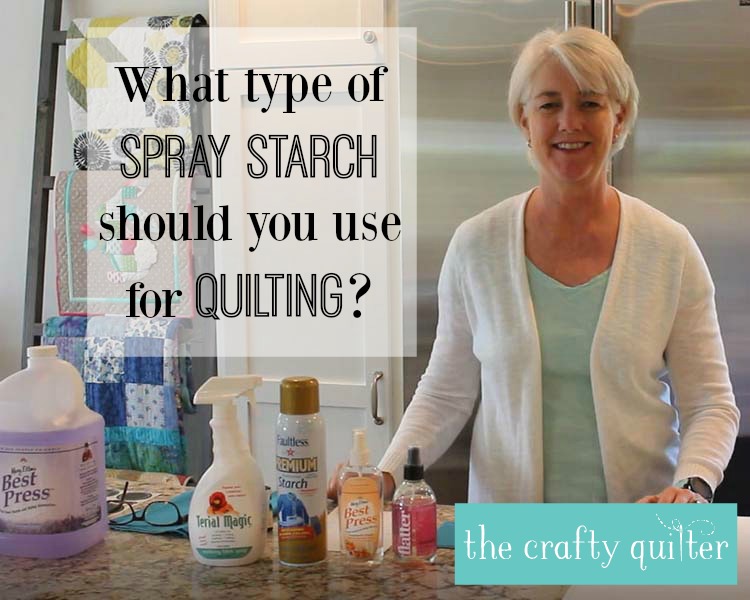
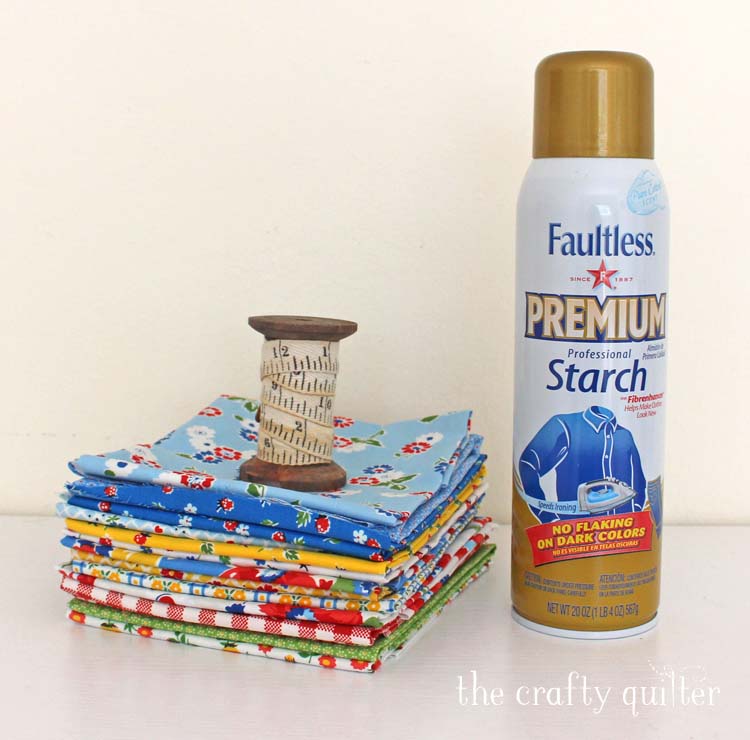

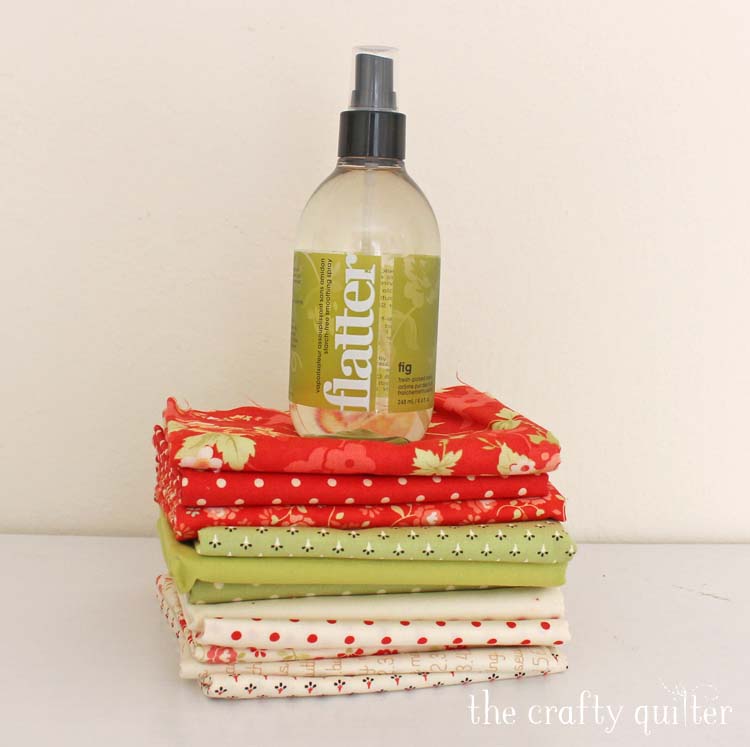
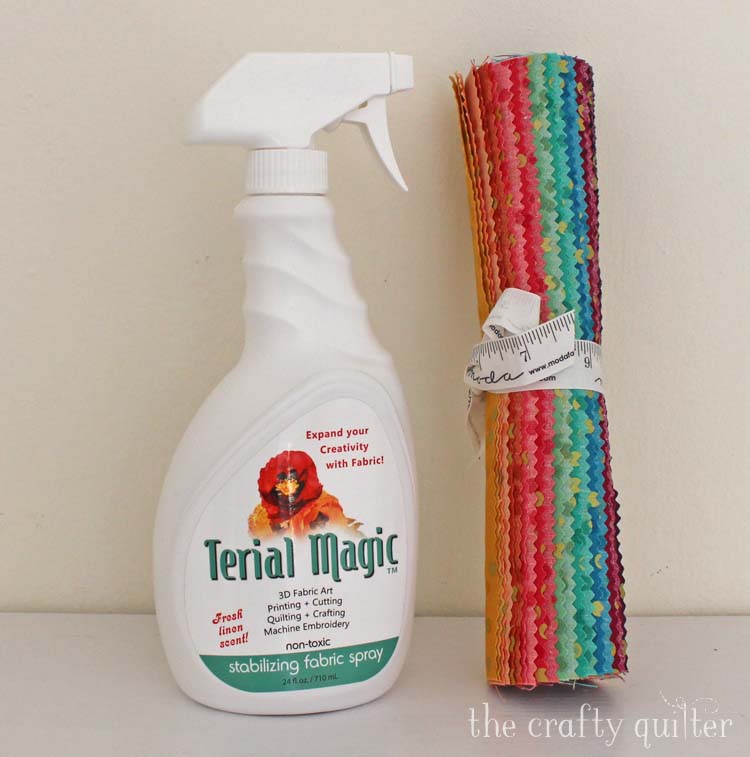
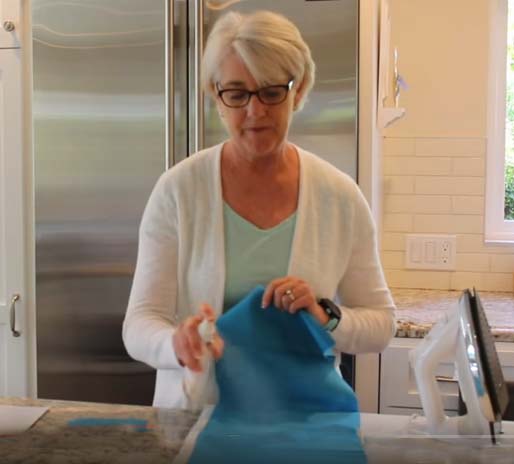


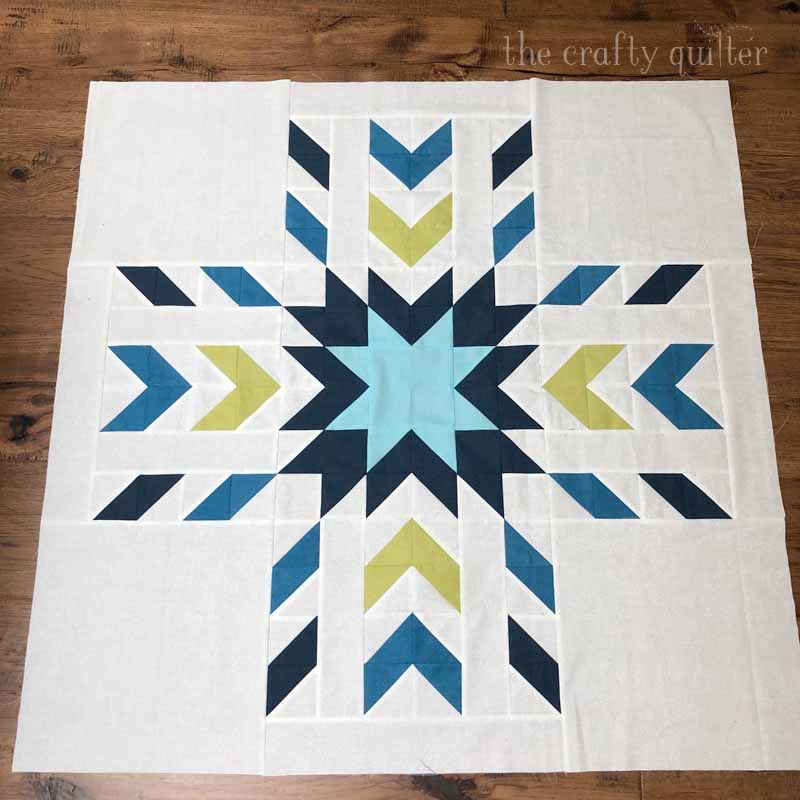
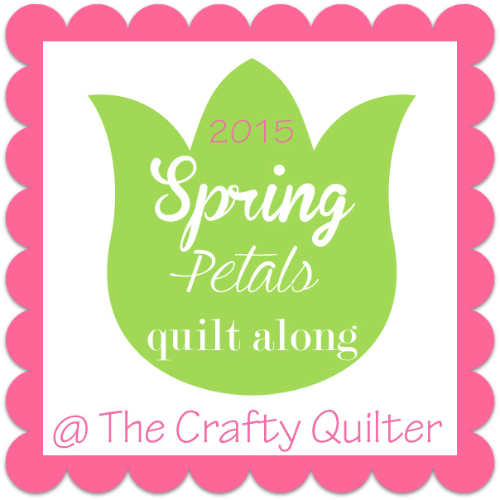

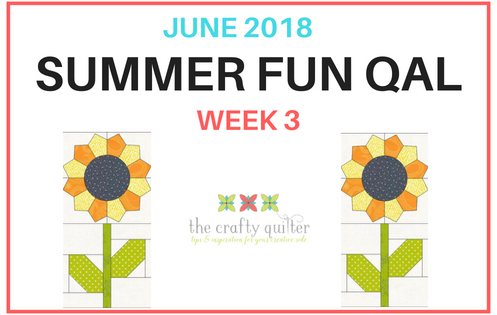

Thank you for all of the valuable information. I never even thought about the problem of a project with starch on it, possibly sitting for a long time and attracting bugs. I have recently started starching my fabrics to get more accuracy when cutting and piecing. I think that I am going to try giving sizing a try.
the only thing I’d like to add is that (from talking to a fabric store owner) Best Press has a lot of chemicals in it that you don’t want to be breathing in, nor would you want your loved one to have to. Her recommendation was to use Sta-Flo.
I am making a quilt that has applique….it will not be laundered….is it safe to use sta flo on it or will it deteriorate or yellow over time
I read on a website that when you use your spray starch you should iron the opposite side, not the side you spray. I do this but I cannot say that it makes a difference. The sole plate of my iron does stay clean though!
I found out about Sta-flo before I started a quilt with lots of angles in it. In the past, I’ve had lots of wonky skewing even though I’m very careful. This time I diluted the Sta-Flo (purchased at my local grocery store) with 50% water and instead of spraying (I’d already spent 3 hours spraying 9.yards of fabric with Best Press) I dunked each piece in the mixture. After I was sure the fabric was evenly covered, I squeezed (semi wrung) out the excess) and draped it over my clothes line until it dried. I then steamed it and sprayed a little water on it where the wrinkles wouldn’t come out.
I had virtually no flaking although I ironed it on the wrong side as a precaution. I have to say my angles were perfect, the fabric did not fray or stretch and it fed thru my machine beautifully.
My long arm gurus love quilting it for all of those reasons.
I’ve just finished my 2nd project, a table runner and had the same experience. I recommend trying it; test it on a small project if you’re worried. I didn’t have the time so I used it on the quilt.
Please be aware that starch will shrink precuts…my 5 inch squares shrunk to between 4.5 and 4.75 inches. Had to change the pattern I was using.
I have been using Best Press because that is what I started using first. I try to buy it with a coupon at Joann’s and then I recently made a wonderful discovery at Menard’s in the laundry supply section. There was the spray bottle for $4.99! and that seems to be the regular price. I bought some for me and some for a friend during their 11% off sale. Such a deal. I might try some of the other suggestions in this post. Thanks for the great information
The owner of a local quilt shop told me she dilutes her Best Press in half with water. I tried it and it works for me. Cuts the cost by one-half, a win-win!
A tip for using Terial Magic…you don’t have to saturate your fabric unless you want a paper like stiffness. Experiment with it to see how much you need for the desired stiffness you want. I have found it makes my piecing more precise.
I am a “Best Press Devotee”; I use it exclusively. Yes, it’s expensive but I buy it by the gallon whenever I find it on sale. To me, it’s worth it. My cutting improved dramatically when I started using it. Maybe I use more of it than others because my fabric ends up crisp and perfect after ironing with it. Plus it’s the only thing I’ve found (other than sticky starch) which removes set-in wrinkles in fabric when it’s been folded for a long time. And I LOVE that it doesn’t gunk up anything as starch will. I just bought a terrific new iron that glides like magic and I’d hate to have to clean it up all of the time – yuck!
Another think I’ve noticed when using Best Press: I don’t pre-wash because I like the wrinkly-pebbly texture quilts develop. All cotton can shrink a little bit, even pre-washed but some cotton (usually somewhat lesser quality) can sometimes shrink like crazy. If this is going to happen, Best Press “reveals” it for you – you will actually see shrinkage happen as soon as you spray. And if it does, my take is so what. It’s done the worst of it’s shrinking so I can go ahead with cutting and sewing to other fabrics without worrying about uneven shrinkage. I’ve never had a problem when a quilt is finished and washed & dried.
But having said this, I’ve never tried the potato vodka/distilled water idea. Think I’ll test it out.
Thanks for all the info Julie!
I make my own solution, known by some as Quilter’s moonshine. Liquid fabric softener, vodka and distilled water. A gallon lasts me quite a long time.
What about aerosol cans? Isn’t it better for the environment to use a pump sprayer?
This is very good information. I starch my fabric however I don’t like throwing out aerosol cans. I mix up some Sta-Flo (enough for the project) and then dunk the fabric in it. I squeeze out the excess and then let air dry until damp. I then iron the fabric. If it gets too dry before I have a chance to iron it, I spritz it with water.
Great information, Julie. I use sizing to iron my husband’s work shirts because he doesn’t like them too stiff. Because I make a lot of mini quilts, I use Best Press on that fabric and get very accurate results in my piecing. I don’t usually press fabric for larger blocks and quilts because of the expense, but maybe I’ll try regular starch.
I’m a fan of Magic Sizing too. It adds light body/stiffness to your fabric, makes piecing easier by keeping seams flat, and gives your quilt a neat finish. It’s also readily available (Walmart) and inexpensive.
A tip for terial Magic is to use a salad spinner to eliminate the drip. Saturate, spin, hang..reduces the mess and speeds drying.
Julie, thanks for the great and thorough topic. I’ve been using Best Press but it’s Lavender and not a good lavender scent. I can’t wait to use it up. I got a whole gallon of it.
I just bought some starch, I believe it’s Stay-Flo maybe. People on the Quiltingboard always talk about using starch and I’m up for anything to improve precision.
Thank you!
Super informative post, Julie! I haven’t heard of Terial Magic but it sounds like there might be some real advantages to it in applique projects.
I purchased terial magic and it does do what it says it will do… I don’t soak my fabric… I just spray and then fold it for a few minutes then iron it… it works for me… the only down side to this product is you can not use it on white fabric…. it turns them a light cream color… like dipping them in diluted tea… not a fan of that…
from the Terial website: Will Terial Magic discolor light-colored fabric?
No. However, when Terial Magic is applied, the fabric may darken a bit. Terial Magic may also change the sheen on shiny fabric. However, the fabric will return to original color and shine after it is rinsed or washed out.
First- you had me on sizing. No wonder i still have wrinkles= I need to use starch on my fabrics and sizing on my clothes. I know some of the ladies in my sewing club use Terial Magic as a stabilizer for embroidery. They love it for the stiffness. I have one spray bottle of Best Press that hangs on my ironing board and i use rarely because it smells good, was $$, and i’m “saving” it. ===WHY DO WE DO THAT??? But i see you have plenty on hand! 🙂 This was interesting….thanks for the research. Costco sells the starch 4 cans a pack less than $10. fyi
Does sizing shrink the fabric like starch does?
Wow! I was never aware of the benefits of starching or sizing let alone what the products are made from or the critters they might invite into the quilt. Thank you Julie for your input and explanations. Very interesting. 🙂
I just recently tried starching pre-cut strips and it worked really well. They were much easier to handle and sew. I did use the Faultless spray starch. What about liquid starch for larger pieces?
I use best press but may have to try some of the suggestions you have here
Very informative. I have been tempted to try a spray starch now and again, but always end up just mixing up a batch like my mom always did. it is useful to understand the differences between the products.
How did you mix up a batch? Can you share the recipe?
Thank you so much for this great article. I found it very helpful. I have been using Best Press and like it, but sometimes it doesn’t give me the stiffness I want. I will keep this information in an accessible place so that I can check it before pressing for my projects. Thank you again!!
Wonderful info Julie! Thanks!
Thank you very much for providing information information about these products. Very confusing to read about them and not know what they are or what they can be used for.
I think I will just stick with my homemade starch and use my saved pennies on more fabric.
You left out the home made version. I like it best. 2 Tbsp or more if you like Potato Vodka in 1 cup Distilled Water. Add about 1 tsp of scented or unscented fabric softener and it really is nice.
I agree with you on the homemade starch. My recipe is 1 oz potato vodka, 8 oz distilled water,and 2-3 drops of your favorite essential oil. Works great and much cheaper.
Must use POTATO VODKA ONLY WITH THE DISTILLES WATER. use to is an option. Thank you for fabric softener idea..will try it. I do purchase spray bottles at the Dollar Tree for $1.00 and give as gifts to class students and friends.
Esencial Oil is optional.
Must you cook it then?
WOW What a thorough study of the available materials used for giving body to fabric. Thank you so much for all the valuable info. Libby
Thank you for the great article. I linked to it in the MPQG Facebook page for it’s wonderful information.
Great information, Julie! Thank you.
If you expect your finished quilt to be washed, starch will be fine. If you expect your masterpiece to be preserved by your heirs, in mint condition, and never washed, be aware of the silverfish that Julie mentioned, and maybe other bugs as well that might cause significant damage over time. Your great-great grandkids will thank you.
Super info, thank you !!
Thanks Julie! This information was so helpful. Whether it’s practical info like this, links to fun quilt-alongs, or your own wonderful projects, I know I’m always in for a treat when your emails arrive.
Really helpful! … as is everything you post
Thank-you.
Warmly,
Patricia
Thanks for this information! I’ve often wondered about the differences among the types of stiffeners. You’ve also got me thinking more seriously about starching before cutting pieces -especially small pieces.
Thanks for all that information! Very informative. I’ve also heard that Starch is a vegtable product, and since I sometimes don’t finish a quilt for several years I stay away from that and use Magic Sizing. (I don’t need to encourage bugs in our warm Calif environment). I’ve never had any problems with any fumes from it, and the price is right! 🙂